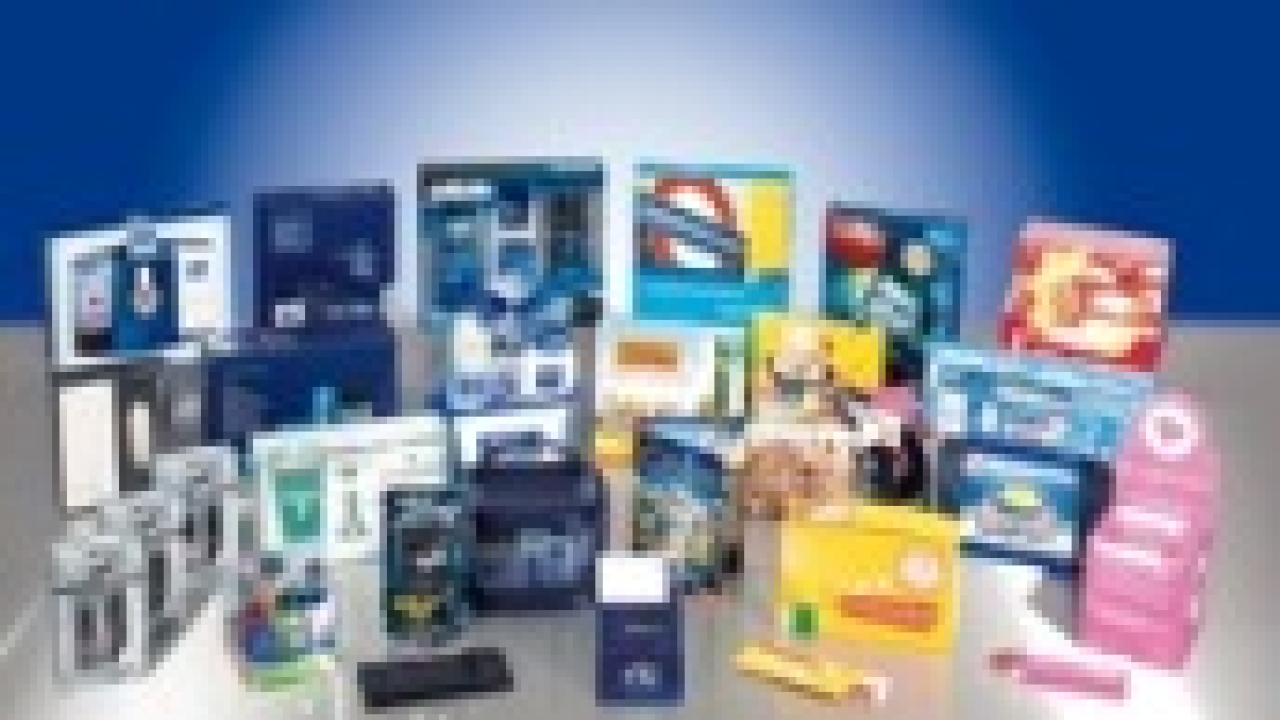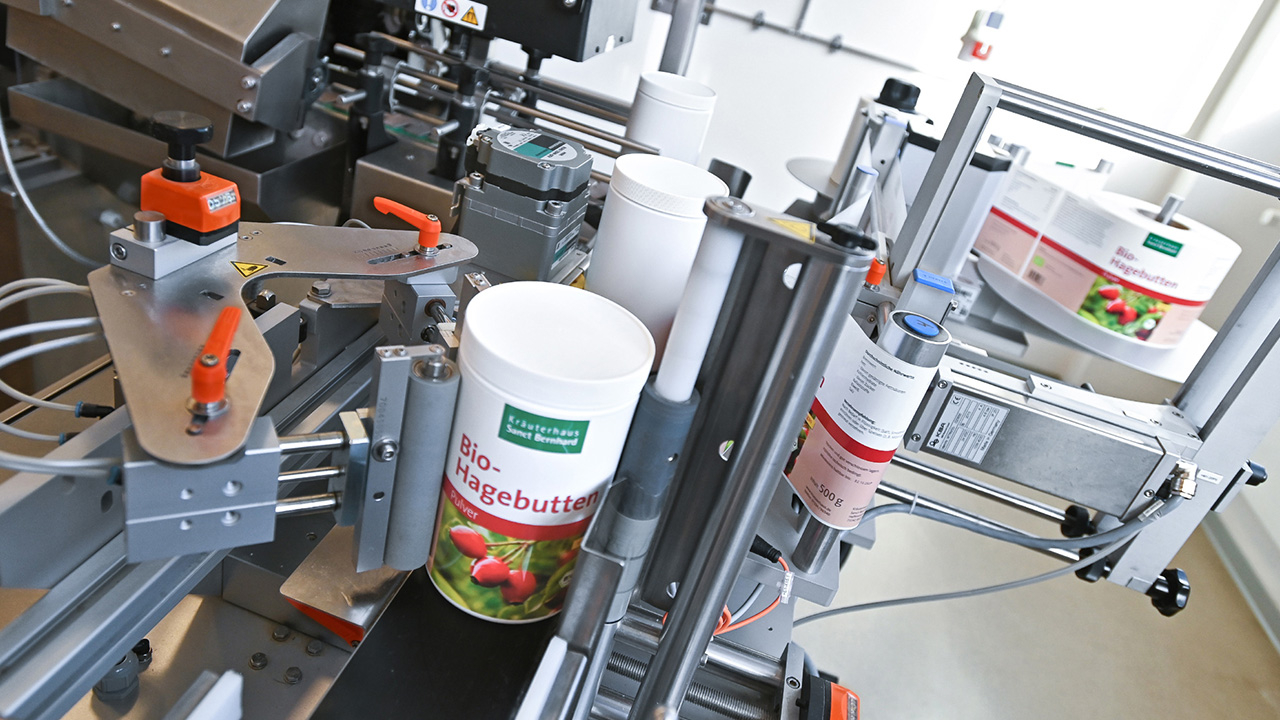Litho technology – printed packaging’s flexible friend

Manroland UK's Adam Robotham explores the latest developments in sheet fed offset production and how the different package printing processes can add something
Over the past decade, printed packaging – like most sectors of the broader printing market – has undergone major changes as it works hard to address the demands of an ever changing and fast paced industry. Consumer trends, the constant and often conflicting calls from brands and retailers for more environmentally friendly packaging solutions which are also cheaper to produce, and the move towards shorter print runs, have all led package printers to re-evaluate how they manage the packaging production process and the technologies employed in it.
Both narrow web flexo and cut-sheet digital printing technologies offer the package printer opportunities for diversification and growth in niche sectors. However, I would argue that those who claim either of these technologies will have a serious impact on litho’s dominance in packaging in the short to medium term, have failed to take into consideration one fundamental truth: that litho technology has not stood still over the last decade. In fact, rather than being left behind by the digital printing sector in particular, as some pundits claim, manroland and all litho press manufacturers, have worked extremely hard, listening to customers and developing pioneering technologies to ensure today’s packaging and carton presses offer the highest level of productivity, quality and flexibility available.
Although both digital and narrow web flexo technologies have made evolutionary advances in recent years, litho press manufacturers have also made significant innovations in prepress and on-press production. For example, huge reductions in make ready times have been achieved in just a few years, and a multitude of automated on-press color, quality and process management software and tools have been introduced – all of which have actually led to litho presses becoming more competitive in this market, and a very attractive proposition to the modern package printer. There are also many sectors of the package printing market that will require the ‘highest of high’ print quality for a long time to come, so, although digital has become much more advanced, it still isn’t quite there for those at the top end of the market.
When you add to this the diverse range of substrates that can now be run efficiently through a litho press, you have a technology with a level of flexibility that is unparalleled in the packaging sector. Recently, one of our packaging customers in Germany began printing 1.6 mm solid board on his Roland press. This is unheard of, and opens up many more opportunities for this company and others who invest in similar technology.
In short, all of this means litho is the most effective printing technology to span the broad spectrum of creative solutions, and offers a level of versatility that other technologies can only aspire to.
Last year, we launched a press that can print up to 18,000 sheets per hour, and is directly targeted at the packaging sector. When you add this to manroland’s award-winning DirectDrive press, you can appreciate that we have a formidable portfolio for the packaging and carton sector. In the past few months, we have secured orders from two leading UK packaging converters, Kingston Carton, and Qualvis Packaging, both of whom cited the developments in litho technology as the reasons for their choices.
If you had told a carton printer as recently as five years ago that he could make ready in six minutes, he would not have let you in the door. Yet, this is exactly what we have now with our DirectDrive press following the introduction of a timesaving six-minute make-ready solution to the folding carton industry. By combining our multi-tasking DirectDrive technology with its RolandColor ink process, package printers can now reduce make ready times by more than 60 percent. Combining the two technologies offers zero make ready on the printing units and a flood coat on two coating units. A UV over-primer and offline plasma treatment on the folder-gluer also ensures no more cutting of coating blankets.
The six-minute make-ready incorporates simultaneous plate changing with the washing of impression and blanket cylinders and there is also no need to wash ink rollers or ink ducts.
While it is true there is a trend in the sector towards declining run lengths, the detail behind the statistics tells another story. Overall packaging runs are reducing, but generally they are coming down from hundreds of thousands to tens of thousands, so are still too long for the current digital presses to compete effectively, especially from a cost per unit perspective, let alone quality and speed.
As the packaging sector becomes generally more cost conscious, the major challenge facing digital manufacturers will continue to be how they can bring the cost per unit down for the package printer. Even at the very short run end of the market, the advances highlighted above have led to cost effective run lengths on litho presses reducing to the point where some printers can compete with digital on run lengths of just a few hundred sheets.
In many instances the ‘click charge’ model, a part of many digital offerings, will need to be re-evaluated for the package printing market, as, apart from the commercial implications, it is perceived as a manufacturer’s royalty on the success resulting from a printer’s drive to bring business in.
Currently we see the greatest threat to package printers with litho technology is not from narrow web flexo or digital technologies, but from litho printers currently in the commercial market taking best practice from the sector where pricing pressures have been acute for many years, and transferring these into production techniques for the packaging sector. In fact, our own anecdotal evidence from across Europe confirms this trend. However, what is especially interesting is that many of them are actually using their B2 presses to target the packaging sector, and keeping their B1 presses free for the commercial print sector. As an example, in the UK commercial printer, Potts Printers has combined its experience in the commercial print sector with the flexibility of a litho press to build a successful venture in the packaging sector.
I have no doubt that both the narrow web flexo and digital printing processes offer the package printing market something positive and provide packaging companies with the opportunity to explore and exploit new sectors, which can only be good for their businesses and profit margins. Evolution is important if any market is to survive and indeed thrive, but, at manroland, we believe it will be a long time before either of these printing processes makes serious inroads into the market. Litho technology has not stood still over the past few years, and when I see what is being conceptualized at the moment in our R&D facilities in Germany, I’m confident it will not be standing still for the foreseeable future either.
Perhaps the most important point however, is that printers, manufacturers, and the industry in general, should not see all these technologies in competition with each other, but rather as complementary, with all of them suited to particular jobs and opportunities.
We all have an interest in seeing and supporting a strong, vibrant packaging sector that is confident in its ability, and able to compete effectively in the market place. That is the key to a positive future.
Stay up to date
Subscribe to the free Label News newsletter and receive the latest content every week. We'll never share your email address.

